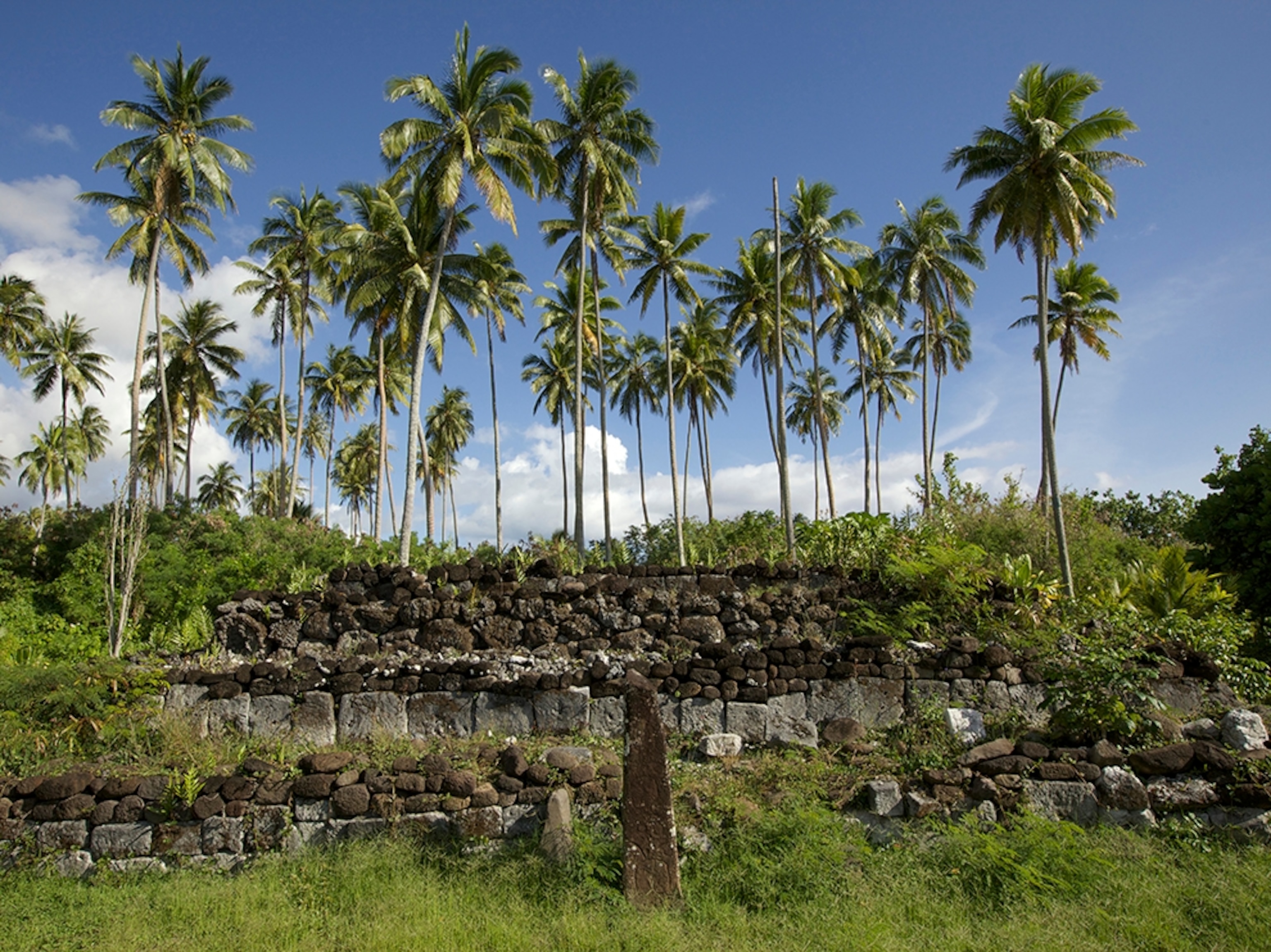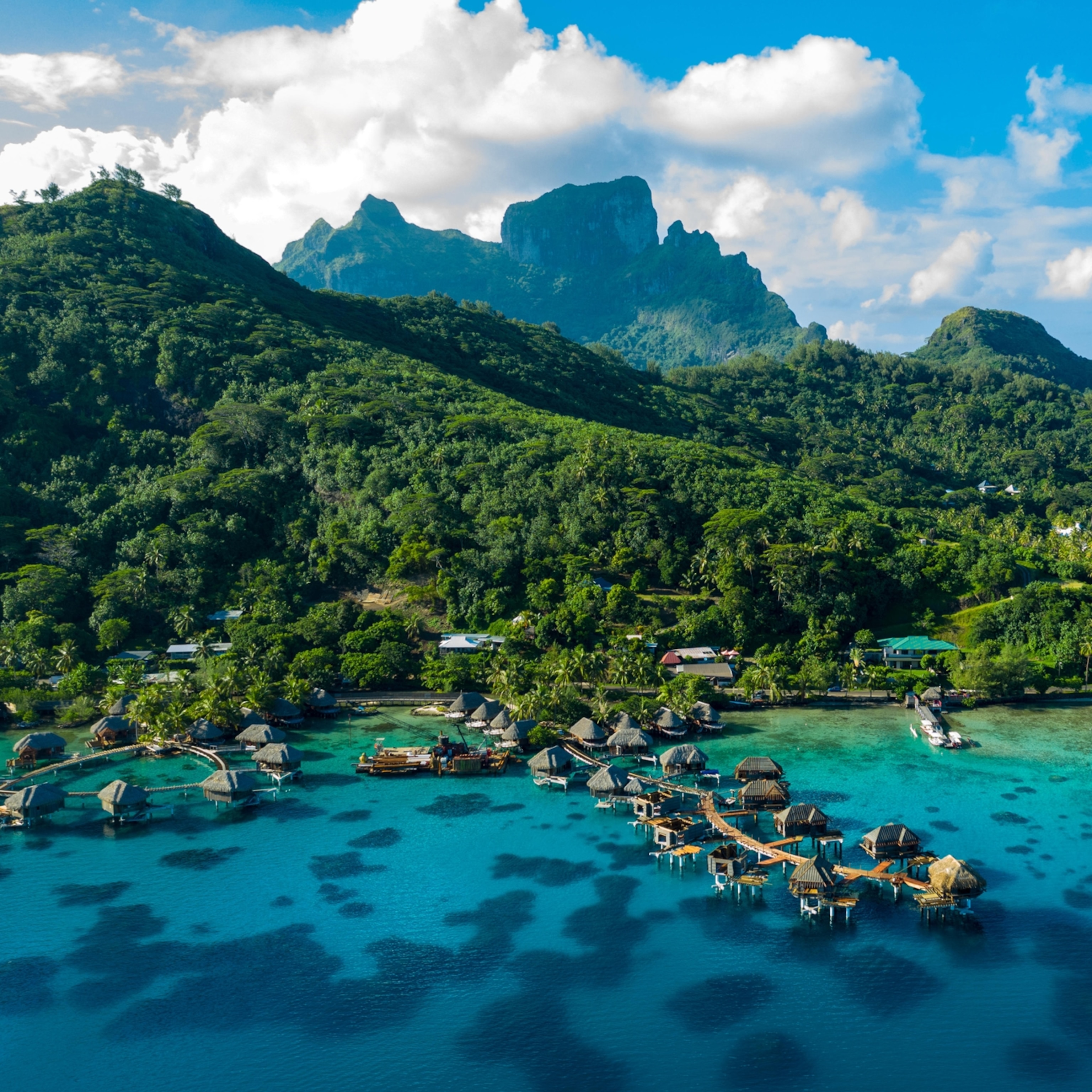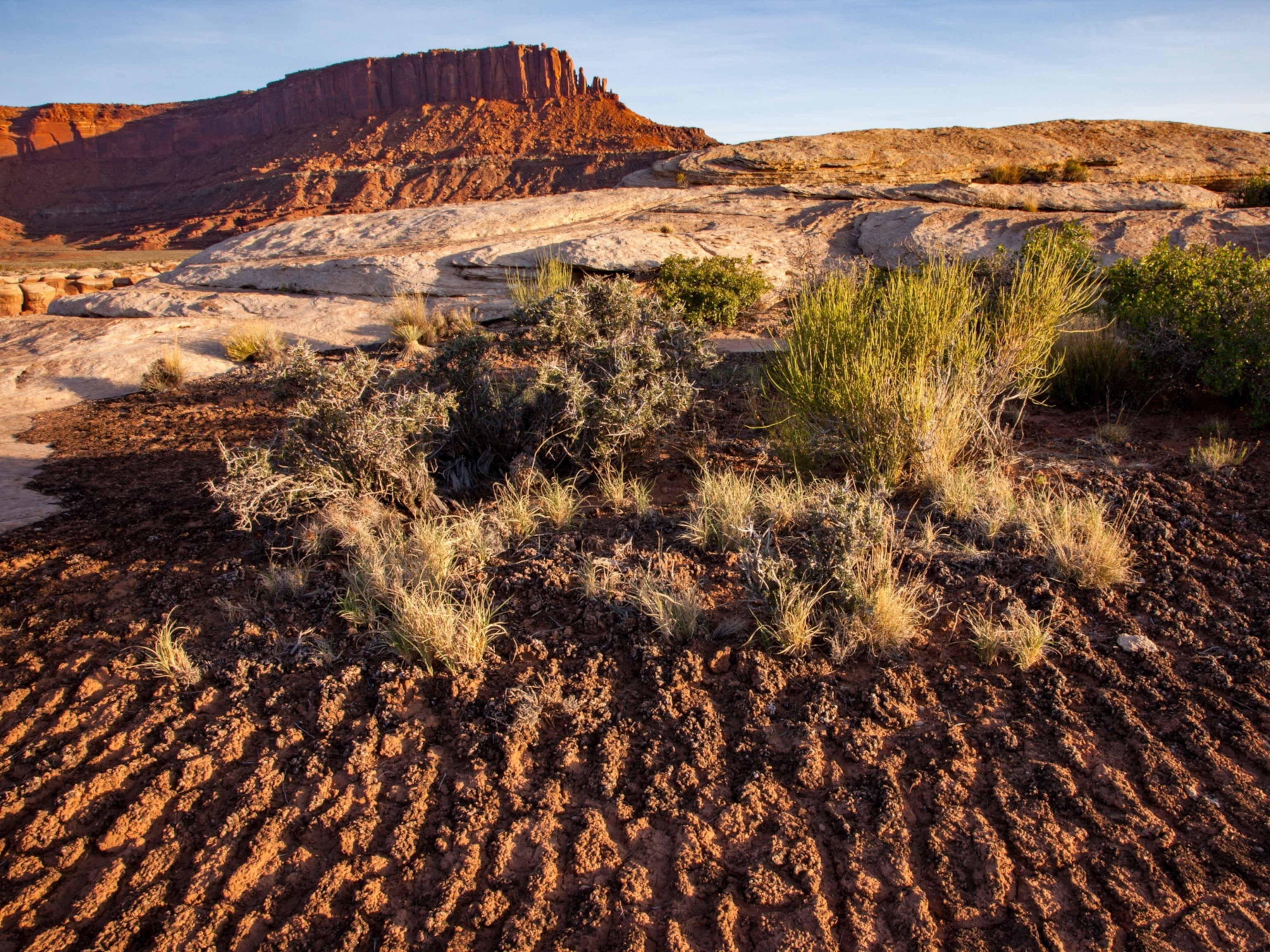
A Culture Written in Stone and Soil
Archaeologists and farmers tell the gritty story of French Polynesia
SPECIAL REPORT: BIODIVERSITY AND INDIGENOUS KNOWLEDGE
Walking up the sweltering, steep slopes of Mo‘orea’s gray volcanic peaks, the lumbering banyan trees, bursts of pink blooms, and iconic views of the South Pacific can mesmerize. But if you stop to catch your breath and glance down, a whole new set of wonders reveals itself at your feet.
There, at ankle level, meticulously stacked, moss-shrouded stone blocks outline an ancient way of life on the forest floor.
These are the marae of Mo‘orea, and while now weathered and overgrown, they once were temples—sometimes covering 4,000 square feet (370 square meters)—where the island’s original settlers, the Maohi, came to pray to gods, pay respect to chiefs, and meet on tribal matters.
Much of what the marae stood for has faded over the years, replaced by European and Christian institutions. But archaeologists are taking a closer look at these well-worn platforms and, in doing so, are digging deeper into the island’s history.
One of best-restored and most-studied marae sits in ‘Opunohu Valley, up the slope from the bay where Captain James Cook anchored during the mid-18th century. Cook was considered an “enlightened voyager,” spending more time than his predecessors interacting with the locals. Indeed, Cook’s stories of Tahiti and the surrounding Society Islands, including Mo‘orea, shaped the European concept of the “noble savage.”
When Cook and other European explorers arrived in this part of the world, there may have been anywhere from 6,000 to 40,000 people living on Mo‘orea in complex chiefdoms. It was a culture that expressed itself economically, socially, and religiously at the marae sites, but also through its use and management of the island’s natural resources.
(See photos of French Polynesia.)
Illustration by Stephen Rountree.
Stake in the Ground
The earliest evidence of humans on Mo‘orea dates back 1,200 years. Those intrepid Polynesian pioneers brought roots and seed stock for breadfruit, Tahitian chestnut, taro, and other introduced species that helped them establish homes and gardens along the coast.
Coastal marae were built, but structures don’t appear in Mo‘orea’s valleys until after 1350, when the population started to spread from the coastline into the mountains, according to Jennifer Kahn, associate archaeologist at the Bishop Museum in Honolulu. She has been coming to Mo‘orea for decades to dig for clues to the past.
Kahn says a boom in marae construction that lasted until the 18th century, just before European contact, reflects a population explosion and an increasingly complex society.
There have been approximately 220 marae and ritual shrines uncovered in the ‘Opunohu Valley, and many others dot the coastline and other interior valleys. This is just a small percentage of the number of structures that are estimated to pepper the whole of Polynesia, according to Kahn.
(See more photos of Mo‘orea.)
The marae were where ruling chiefs made political, social, and religious decisions, explains Hinano Teavai-Murphy, president of the Association Te Pu Atitia. It’s a community-based nonprofit that aims to bridge the gap between local indigenous knowledge and western science.
“Each family clan had a marae and they were indicative of land ownership. All genealogy is built and attached to a marae,” says Tevai-Murphy. “For us land is very important, it’s a place where you bury your ancestors, and the placenta of your children. We don’t own the land, we belong to the land.”
“You want to be careful in all of this to not paint an idyllic picture of the past,” points out Dana Lepofsky, an archaeology professor at Simon Fraser University in British Columbia who has worked with Kahn. “People are people.” The marae also are where ancient Polynesians made human sacrifices to their war-god ‘Oro. And the elite were self-serving, she explains, extracting resources and demanding agricultural production from the working class for their own ceremonies.
Feast or Famine
At the same time that Mo‘orean (Maohi) society was booming, its approach to agriculture was shifting from erosive land clearing to terraced fields and orchards that could reliably and sustainably feed a growing population. Maohi farmers, through generations of careful observation and trial and error, gained significant ecological knowledge about how best to cultivate that landscape.
Sometime in the past, a top-down land management system called rahui was established, where chiefs restricted harvests to ensure there was enough food for elite feasts on the ruling class’s marae. These top-down restrictions, in combination with the farmer’s ecological knowledge may have led to a kind of conservation ethic.
(Read more about the link between biodiversity and traditional knowledge.)
From 1650 to 1788, some chiefdoms in the ‘Opunohu Valley were at war with coastal chiefs. Local stories and chants tell of battles between those who lived in the less productive “dry” land on the shores and those who settled on the more fruitful “wet” land farther inland. Later the valley became a refuge for coastal chiefs fleeing European influence.
Returning to the Roots
Mo‘orea became a French colony in 1880, and in the 1900s the French introduced species from their own gardens, including Miconia (Miconia calvescens). Miconia, which now fringes most marae sites with its waxy broad leaves, is an invasive species that threatens to shade out the Maohi cultivars and native plants that have grown in Mo‘orea’s forests for centuries.
Today in the ‘Oponohu Valley, instead of terraced fields next to marae and elaborate forest gardens, you see cookie-cutter pineapple plantations with exposed blood red soil. Much of the knowledge of agricultural traditions, along with 80 percent of the population, was wiped out in the 1800s by diseases brought from Europe. The mono-cropped pineapple plantations on Mo‘orea are in sharp contrast to the biologically and structurally diverse agricultural systems of pre-European times. There once were more than a dozen varieties of bananas on Mo‘orea, according to Lepofsky.
(See Photos: What’s in a Cubic Foot of Tropical Forest.)
Mo‘orea’s population, now about 16,000, is concentrated on the coasts, but there’s a surge of interest in returning to the rich soil of the valleys. There, among the old marae sites in the ‘Opunohu Valley, students like Tearai Marzin, who attends an agricultural high school, are tapping into their roots as they go out of their way to learn how to cultivate traditional Polynesian crops.
The interest in keeping tradition alive is growing, but traditional farming practices are still fairly limited. Marzin has had to turn to community leaders like Teavi-Murphy to connect her with elders who can share knowledge she can’t get at the school. “There is a lot to learn from them that isn’t part of the curriculum,” she says.
This interest in traditional agriculture is an example of a trend Lepofsky has seen in her work around the world—as people reclaim their heritage, they increasingly turn to lessons learned by their ancestors about how to sustainably interact with their environment.
“There is an inextricable link,” she says, “between biological and cultural diversity.”
(Read more about scientific research on the island.)
This report was made possible with funding from the Christensen Fund.





